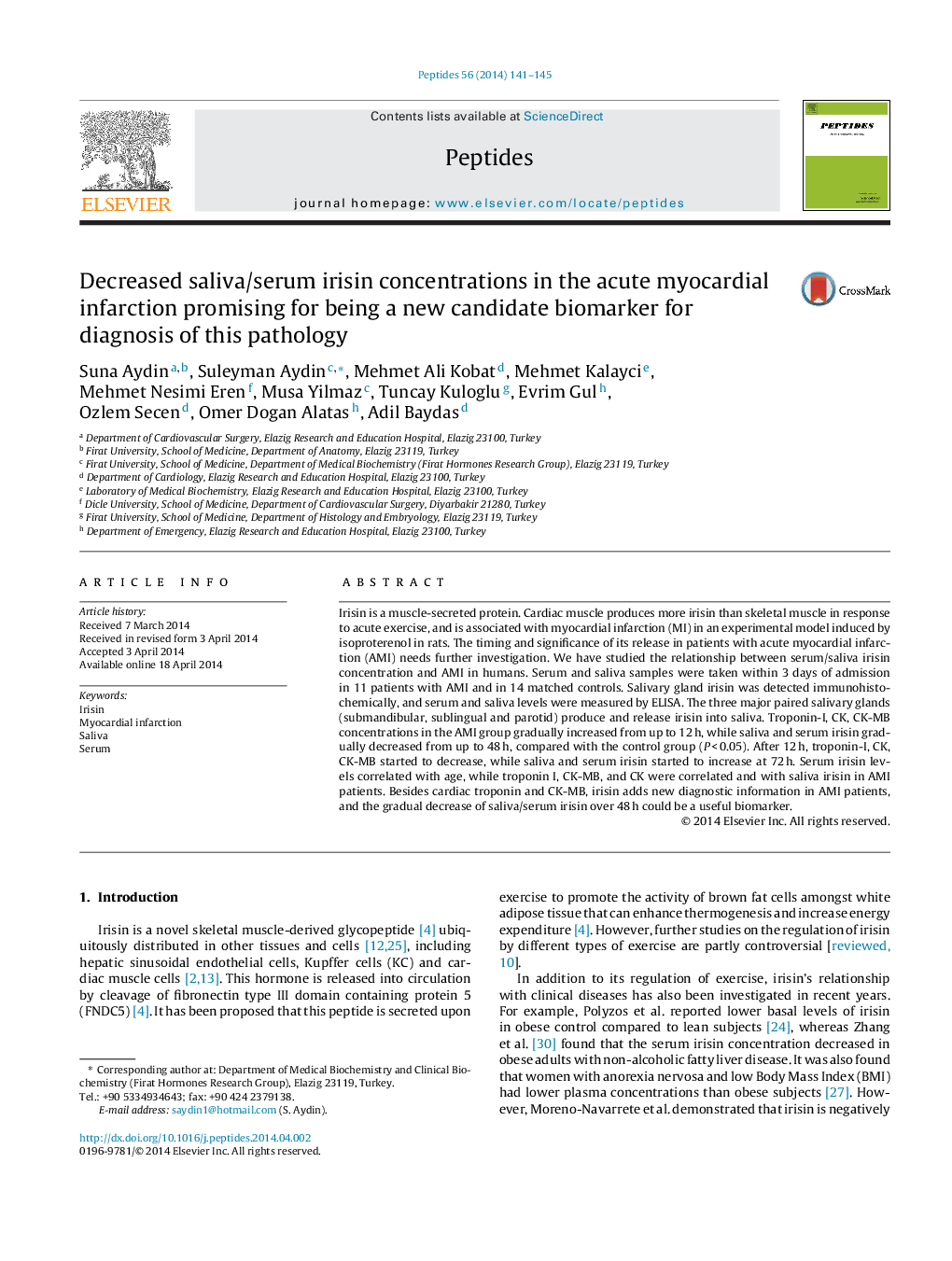| Article ID | Journal | Published Year | Pages | File Type |
|---|---|---|---|---|
| 2006071 | Peptides | 2014 | 5 Pages |
•Saliva and serum irisin concentrations decrease in AMI patients.•Parotid (highest), submandibular and sublingual salivary glands (lowest) produce irisin.•Saliva irisin concentration is higher than the corresponding serum level at all time-points in AMI patients.•Irisin inversely correlates with most important biomarkers of AMI.•Saliva irisin concentration might be alternative to blood irisin concentration.
Irisin is a muscle-secreted protein. Cardiac muscle produces more irisin than skeletal muscle in response to acute exercise, and is associated with myocardial infarction (MI) in an experimental model induced by isoproterenol in rats. The timing and significance of its release in patients with acute myocardial infarction (AMI) needs further investigation. We have studied the relationship between serum/saliva irisin concentration and AMI in humans. Serum and saliva samples were taken within 3 days of admission in 11 patients with AMI and in 14 matched controls. Salivary gland irisin was detected immunohistochemically, and serum and saliva levels were measured by ELISA. The three major paired salivary glands (submandibular, sublingual and parotid) produce and release irisin into saliva. Troponin-I, CK, CK-MB concentrations in the AMI group gradually increased from up to 12 h, while saliva and serum irisin gradually decreased from up to 48 h, compared with the control group (P < 0.05). After 12 h, troponin-I, CK, CK-MB started to decrease, while saliva and serum irisin started to increase at 72 h. Serum irisin levels correlated with age, while troponin I, CK-MB, and CK were correlated and with saliva irisin in AMI patients. Besides cardiac troponin and CK-MB, irisin adds new diagnostic information in AMI patients, and the gradual decrease of saliva/serum irisin over 48 h could be a useful biomarker.
